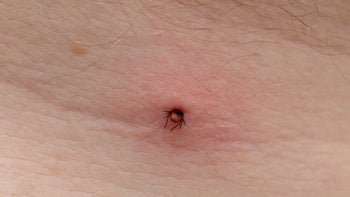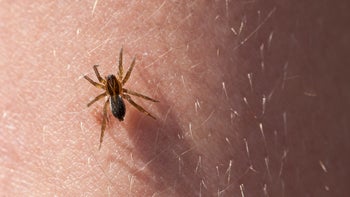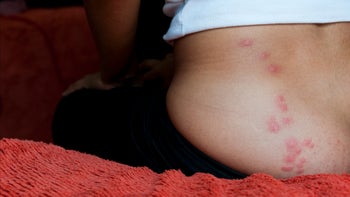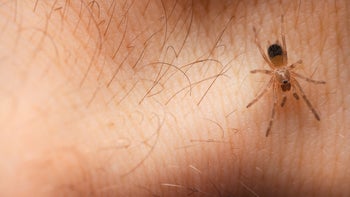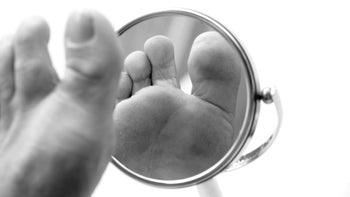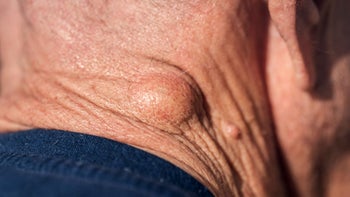
How Do You Get Rid of Skin Tags? 3 People Share Their Tips
Key takeaways:
Skin tags are non-cancerous growths that can appear anywhere on the body.
They don’t necessarily need to be removed. But many people remove them for cosmetic reasons or because they get caught on clothing or jewelry.
A healthcare provider can remove a skin tag professionally. Over-the-counter treatments and essential oils are also available.
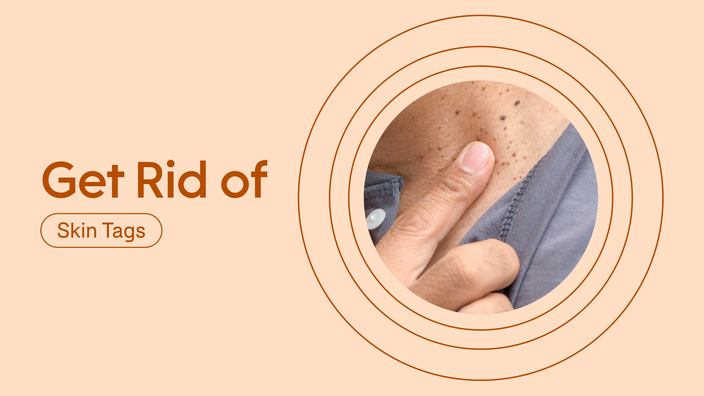
Skin tags are usually harmless and painless non-cancerous growths. Around half of all adults will develop one or more skin tags as they age.
They commonly form on the armpits, inner thighs, eyelids, and under the breasts. But skin tags can grow anywhere on the body. People with obesity, diabetes, or hormonal changes are at a higher risk of developing them.
Although skin tags generally aren’t painful, they can become irritated if clothes or folds of skin constantly rub against them. And some people want to remove them for cosmetic reasons.
Search and compare options
A dermatologist can remove a skin tag by burning, freezing, or cutting it off. Providers recommend this instead of doing it yourself. But some people turn to over-the-counter products and essential oils to try to treat skin tags at home.
Those who have had skin tags say they’re a minor nuisance. Here’s how three people dealt with them.
Tea tree oil is essential to removal
Shortly after turning 40, Michael Springer, an eCommerce entrepreneur from Los Angeles, began to notice skin tags on the inside of his arms. They were of various sizes, but none were very large or uncomfortable.
Although his underarms previously had been smooth, Michael says it wasn’t a total surprise to suddenly see skin tags.
“I do have a family history of getting them,” he says.

“I wanted to have clean skin, but I wanted to stay away from surgery, which is why I never consulted a physician,” Michael says. Instead, he asked family members about home remedies they had used.
Several told him they had success with tea tree oil. And that’s the method that has worked for Michael, now 49. His sister, who also started getting skin tags, has successfully removed them using tea tree oil, as well.
Read more like this
Explore these related articles, suggested for readers like you.
“I get my tea tree oil from a pharmacy. I dip a cotton ball into the oil and apply it to the skin tag once a day, usually before I go to bed,” he says.
In 2 to 3 days, the tag turns dark. Within 7 to 9 days, it falls off.
“It sometimes will hurt a little, but I’ve never had an infection or bleeding.”
Over-the-counter remedies don’t always work
Twenty-six-year-old Karan Tiwari, a web designer and content manager living in Nepal, was surprised when skin tags began appearing on his body last year. Although the flesh-colored growths can develop at any age, they most often occur on the skin of older adults. Karan wonders whether his darker skin pigmentation is more prone to skin tags.
“They have mostly been concentrated on my neck and underarms,” Karan says. “So far, there have been 10 to 15 on my neck of different sizes and about 7 under my arms.”
Although the skin tags weren’t uncomfortable, Karan was self-conscious because they were so visible. “I thought they were unsightly and wanted to improve my appearance by removing them,” he says.

He decided to remove them himself but consulted with his physician first. He suggested several available home remedies Karan could try.
“I tried an over-the-counter topical cream for about a month, but that didn’t work,” he says. He also bought a freezing kit to remove them, but that wasn’t effective, either.
“Finally I consulted with another physician who recommended cutting them off, and he removed them with a surgical knife in his office.”
Initially Karan experienced mild discomfort and redness where they were removed. “It was not at all severe and cleared up very quickly,” he says.
Removing them is now a part of his ongoing body maintenance routine. “I don’t want them to grow too much, so I have them taken off as soon as I notice a new one.”
Diluted oregano oil is another home treatment
Laura Elm, a 42-year-old travel blogger from Pittsburgh, had always had several large moles and birthmarks, but skin tags didn’t appear until about a year ago. So far she’s developed two, but they both became a problem when they began to hurt.
“The one on my lower back started to make it uncomfortable when I would sit in certain positions, and the one below my armpit was getting rubbed by my bra,” she says.
Laura had used different essential oils for years to treat headaches, allergies, and anxiety. “I had read that oregano oil was good for different ailments, including skin tags,” she says.

An essential oil is often mixed with another ingredient, known as a carrier, to dilute its strength. “I dilute the oregano oil with fractionated coconut oil, which allows it to stay liquid,” Laura says. “But I could also mix the oregano essential oil with grapeseed oil, solid coconut oil, avocado oil, or even unscented lotion.
She mixes 5 to 10 drops of oregano oil with her carrier ingredient.
Laura applied the oil mixture several times a day. Because her skin tags had been in place for a while, it took multiple applications over several days before they dried out and eventually fell off. Despite the number of applications, Laura didn’t experience any skin irritation.
“Next time one appears,” she says, “I’ll act more quickly to remove it before it becomes a problem.”
What does the doctor say?

Patricia Pinto-Garcia, MD, MPH
Medical Editor
Many people develop skin tags over the course of their lives. While skin tags don’t damage your skin, they can become irritated or painful. And depending on where they’re located, they can impact your appearance, too.
When it comes to removing a skin tag, it’s best to have it professionally done to avoid the risk of infection or bleeding. While it may be more time-consuming and potentially more expensive, professional removal works.
Some people may find success with home remedies or essential oils, but there’s no solid evidence that these options will work. And, these oils can cause skin inflammation, making the situation worse.
So, if you’re worried about a skin tag (or any skin change), reach out to a healthcare professional. They can help you decide on the best steps to get the results you want.
Why trust our experts?









